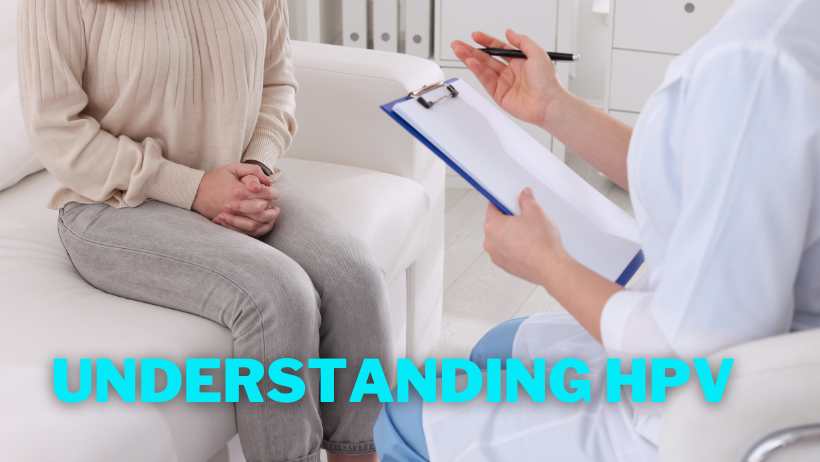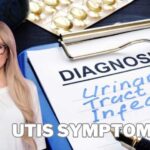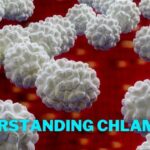
Have you ever pondered which sexually transmitted disease is the most prevalent in the United States? Without further ado, this is human papillomavirus, or HPV.
At some stage in their lives, nearly everyone is susceptible to this bothersome infection, which is caused by a virus family with more than two hundred distinct strains. HPV, whether acquired via sexual contact or non-sexual contact, is capable of being quite deceptive. Although the majority of strains do not manifest any symptoms, certain varieties may induce genital warts.
However, there are methods available to detect and treat HPV. It is advised that screenings commence at age 30 and be performed every five years until age 65. Although there is no known cure, the infection is typically eliminated by the immune system within two years. The most effective method of protection against HPV is to receive the HPV vaccine. Consequently, let us explore the compelling realm of HPV and acquire knowledge on safeguarding ourselves.
Comprehending HPV
In the United States, human papillomavirus (HPV) is the most prevalent sexually transmitted disease. It is critical to have a comprehensive understanding of human papillomavirus (HPV), including its nature, mode of transmission, various subtypes, potential symptoms and complications, diagnostic techniques, treatment options, and most significantly, preventative measures.
The meaning of HPV
HPV is caused by a virus family comprising more than two hundred distinct genotypes, which are categorized as medium or high risk. Germatomas are commonly associated with low-risk strains of human papillomavirus (HPV), whereas cancer can be precipitated by high-risk strains. It is crucial to emphasize that while not all individuals who contract high-risk HPV strains will develop cancer, doing so does elevate the likelihood.
HPV Prevalence in the Continental United States
HPV infection affects almost everyone at some stage in their lives. In actuality, the majority of the approximately 79 million Americans who are presently infected with HPV are in their late teens and early twenties. An estimated 14 million novel infections are documented annually in the United States. These astounding figures underscore the criticality of comprehending HPV, the means to prevent it, and the health resources at our disposal.
Propagation of HPV
Sexual Intercourse
Herpes simplex virus (HPV) is predominantly transmitted via sexual contact, encompassing anal sex, vaginal intercourse, and oral sex. Virus transmission occurs via direct skin-to-skin contact, irrespective of the absence of observable symptoms or lesions. HPV can infect areas not covered by the condom, so while condoms may offer some protection against the virus, they do not completely eliminate the risk.
Transmission outside of the sex
HPV can also be transmitted via non-sexual contact, in addition to sexual contact. This includes swimming pools, gyms, and locker rooms, where skin-to-skin contact occurs. Transferring personal belongings, including razors or linens, to an individual infected with HPV can additionally heighten the likelihood of transmission. Although non-sexual transmission is less prevalent than sexual transmission, these potential sources of infection should still be taken into consideration.
Variety of HPV
Low-Risk Varieties
Infection with genital warts is caused by low-risk genotypes of HPV. In general, these strains do not induce malignant transformations within the organism. Although genital warts do not pose a risk to an individual’s life, they have the potential to induce emotional distress, discomfort, and negatively impact one’s overall quality of life. It is critical to bear in mind that despite the potential for treatment and excision of genital warts, the virus may persist within the organism.
Critical-Risk Strains
Particularly cervical cancer, high-risk genotypes of HPV are directly associated with the development of specific forms of cancer. In addition to penile, anal, vaginal, vulvar, and anal malignancies, these subtypes are also capable of causing oropharyngeal cancer. It is crucial to acknowledge that while the majority of individuals infected with high-risk HPV strains do not progress to cancer, the virus does elevate the risk. Vaccinations and routine screenings are critical for early detection and prevention.
Complications and Symptoms
Asymptomatic Pneumonia
The majority of HPV strains are asymptomatic, or devoid of any discernible signs or symptoms. Because of this, HPV is frequently labelled a “silent” infection. Consequently, people may be ignorant that they are infected with the virus and may transmit it unknowingly to others. Consistent screenings and testing are essential for detecting and preventing the transmission of HPV.
Sexual Warts
Genital warts, which manifest as tender, fleshy projections in the genital region, may beinduced by specific strains of human papillomavirus (HPV). These cauliflower-like, raised, flat, or elevated tumors may induce pruritus, pain, or discomfort. A healthcare professional can treat and remove genital warts; however, it is crucial to bear in mind that mere removal of the warts does not result in viral eradication from the body.
Precancerous Alterations
High-risk genotypes of human papillomavirus (HPV) have been linked to the onset of precancerous transformations within the organism. Alterations of this nature may manifest in the penis, cervix, anus, vagina, vulva, or oropharynx. Consistent examinations, such as pap smears, enable opportune intervention and treatment by detecting these changes at an early stage. Untreated, these precancerous alterations have the potential to evolve into malignancy.
Pap Tests for HPV Testing
Pap smears, which are Pap tests, are frequently employed for the purpose of cervical cancer screening. In order to detect any aberrant changes, cervix cells are examined under a microscope during a Pap test. Pap tests do not only detect cervical cancer, but also HPV infections. It is advised that HPV testing commence at age 30 and continue every five years until age 65, or as your healthcare provider specifies.
Testing Kits for HPV
HPV testing packages represent an alternative method of HPV detection. The utilization of these products is limited to personal residences and entails the collection of a cell sample from the anus, cervix, or vagina. Following this, the specimen is transported to a laboratory for analysis. Adhering to the guidelines included in the testing instrument and seeking guidance from a healthcare professional are crucial in order to accurately interpret the results.
A set of suggested testing guidelines
The testing guidelines for human papillomavirus (HPV) may differ based on variables including age, gender, and sexual history. A consultation with a healthcare provider is imperative in order to ascertain the testing schedule that is most suitable for an individual. Consistent examinations and testing are imperative in order to detect, treat, and prevent complications associated with HPV at an early stage.
Management of HPV
Incurable HPV
At this time, no cure exists for HPV. Nevertheless, the infection is typically eradicated by the immune system within a span of two years. Regular examinations and testing are of the utmost importance due to the potential for timely intervention and prevention of HPV-related complications through early detection.
Elimination of Infection
Although an HPV infection does not have a definitive treatment, promoting a healthy lifestyle can assist in enhancing the immune system’s capacity to eliminate the virus on its own. This consists of engaging in secure sexual behavior, maintaining good hygiene, consuming a balanced diet, sleeping enough, managing tension, and abstaining from tobacco and excessive alcohol consumption.
Elimination of Genital Warts
A healthcare professional is capable of treating and removing genital tumors that are caused by HPV. Potential treatment modalities may comprise topical lotions, liquid nitrogen cooling, laser excision, or laser removal. It is essential to remember that eliminating the virus does not result in the removal of the warts; furthermore, the warts may reappear.
Management of Precancerous Alterations
A range of treatment options are accessible in the event that precancerous changes are identified via screenings, contingent upon the specific site and extent of the changes. Cryotherapy, laser therapy, excisional procedures, and other specialized techniques may be among these treatment alternatives. Treatment and early detection are crucial in preventing the development of cancer.
Mitigation of HPV
The HPV Vaccine
The most effective method of protection against HPV is vaccination. Vaccinations against HPV are effective, safe, and strongly advised for both males and females. Two to three doses of the vaccines are administered in a series, contingent upon the age of the individual. Vaccination prevents infection with the low-risk strains of HPV that are responsible for genital warts as well as the most prevalent high-risk strains.
Advantages of HPV Immunization
The HPV vaccination provides a multitude of advantages. It is effective against the majority of cervical cancer cases and other malignancies associated with HPV in both males and females. In addition to protecting against genital tumors, vaccination decreases the likelihood of HPV transmission to sexual partners.
Obtaining the HPV vaccination not only ensures personal protection but also makes a significant contribution to the larger endeavor of diminishing the incidence of this virus and the complications it engenders.
Who Ought to Be Vaccinated?
Beginning at age 11 or 12, the Centers for Disease Control and Prevention (CDC) advises both males and females to receive an HPV vaccination. When administered prior to sexual activity and when the immune system is at its most receptive to the vaccine, vaccination exhibits its highest efficacy.
Nevertheless, those who have not yet received the vaccine may still derive advantages from doing so until they reach the age of 26 for females and 21 for males.
Vaccine Timetable
Two to three doses of the HPV vaccine are administered, with the exact number of doses contingent upon the age of the individual receiving the vaccine. Typically, the second dose is administered one to two months following the initial dose, with the third dose, if necessary, being administered six months subsequent to the initial dosage. For optimal protection, it is vital to adhere to the recommended vaccination schedule.
Further Preventive Actions
There are additional preventive measures that can be implemented alongside vaccination to mitigate the likelihood of acquiring or transmitting HPV. Reducing the risk requires engaging in safe sexual behavior, consistently and correctly using contraceptives, limiting the number of sexual partners, and communicating openly and honestly about sexual history. In addition to maintaining excellent overall health, routine examinations and testing can contribute to prevention.
Connecting HPV and Cervical Cancer In relation to HPV and Cervical Cancer
A direct correlation exists between HPV and the onset of cervical cancer. Cervical cancer is, in fact, almost exclusively precipitated by HPV infection.
Consistent cervical cancer examinations, including pap tests, are critical in order to identify precancerous changes in time to facilitate timely intervention. In conjunction with routine examinations, HPV vaccination can substantially diminish the likelihood of developing cervical cancer.
Breast Cancer Detection
Pap tests and other cervical cancer examinations assist in the detection of any abnormalities in the cervix. Cells are extracted from the cervix and scrutinized microscopically for indications of precancerous or malignant cells during a pap test. It is advised that routine examinations commence at the age of 21 and persist at three-year intervals, or as your healthcare provider specifies.
HPV and Additional Cancers
Causes of HPV-Associated Cancers
HPV has the potential to induce various malignancies, including but not limited to cervical cancer, anal, vaginal, vulvar, penile, and oropharyngeal malignancies. Although less prevalent than cervical cancer, these malignancies still pose a substantial risk. Consistent examinations, immunization, and the adoption of a healthy lifestyle are imperative in order to detect and prevent malignancies associated with HPV at an early stage.
Cancer Prevention Associated with HPV
A comprehensive strategy is required to prevent malignancies associated with HPV, which consists of vaccination, routine examinations, and the adoption of healthy lifestyle habits. The most prevalent high-risk HPV strains are prevented through vaccination, whereas routine screenings enable the timely identification of any anomalous alterations.
By adhering to recommended preventive measures, practicing secure sexual behavior, and maintaining good overall health, the risk of developing malignancies associated with HPV can be substantially diminished.
To conclude,
Sexually transmitted viruses (HPV) are widespread and have the potential to cause severe health complications, such as various forms of cancer. Understanding the available testing methods and treatments, in addition to the transmission, symptoms, and complications associated with HPV, is of utmost importance.
Getting vaccinated against HPV is the most effective method to safeguard yourself and others, as prevention is of the essence. Consistent examinations, transparent communication, and the adoption of healthy lifestyle habits are all critical factors in mitigating the adverse health effects of human papillomavirus (HPV).
Awareness and education are crucial components in enabling people to proactively manage their sexual health and make well-informed choices. We can reduce the prevalence and impact of HPV not only in the United States, but globally, by remaining informed and implementing preventative measures.










